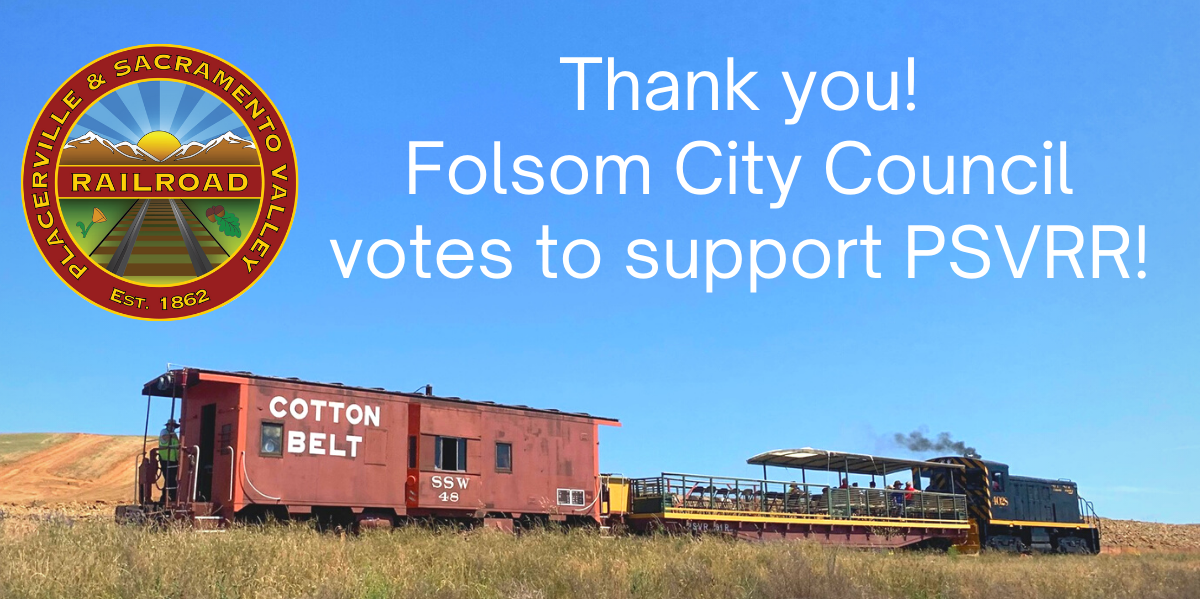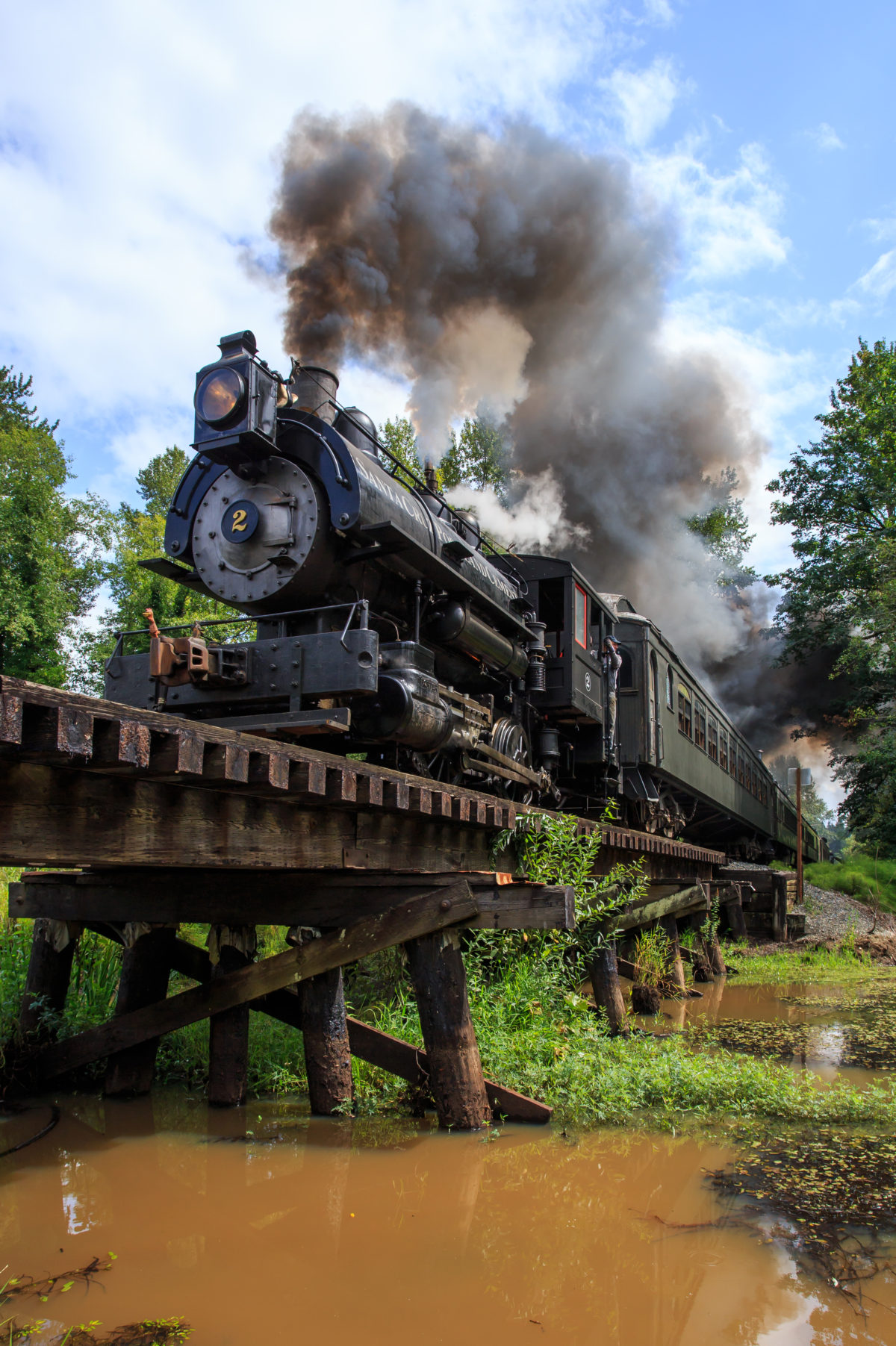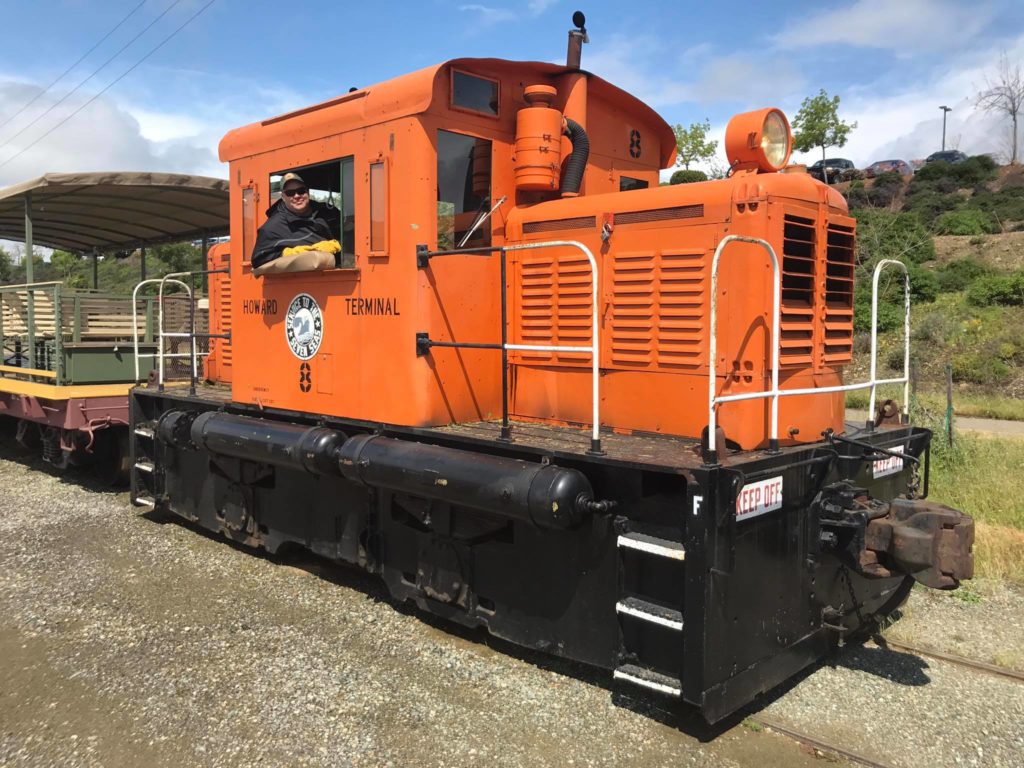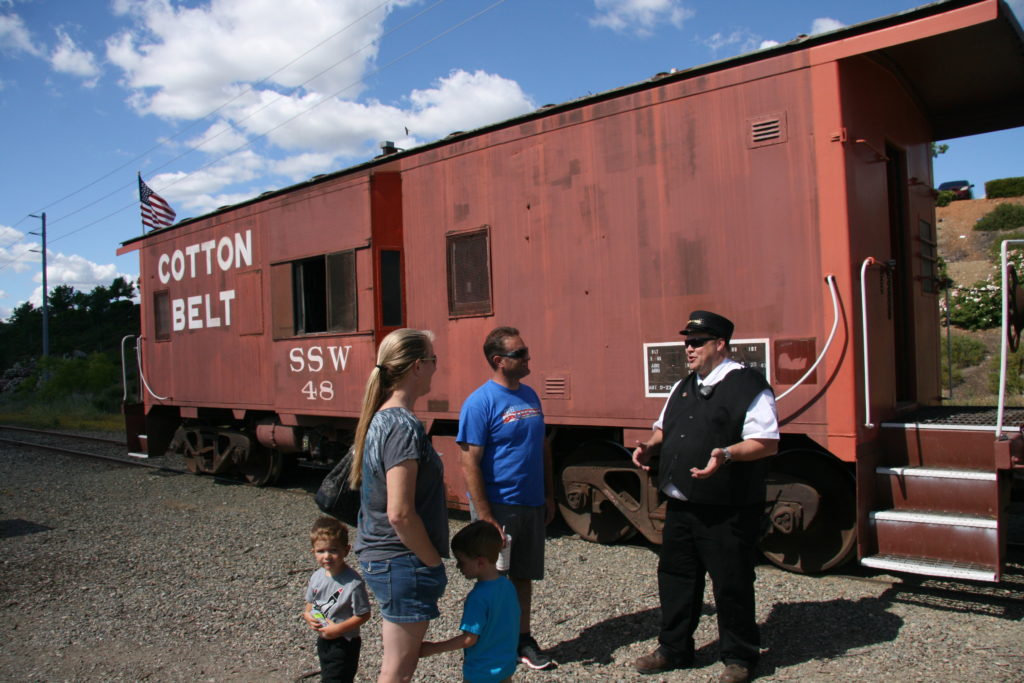Santa Cruz Portland Cement #2
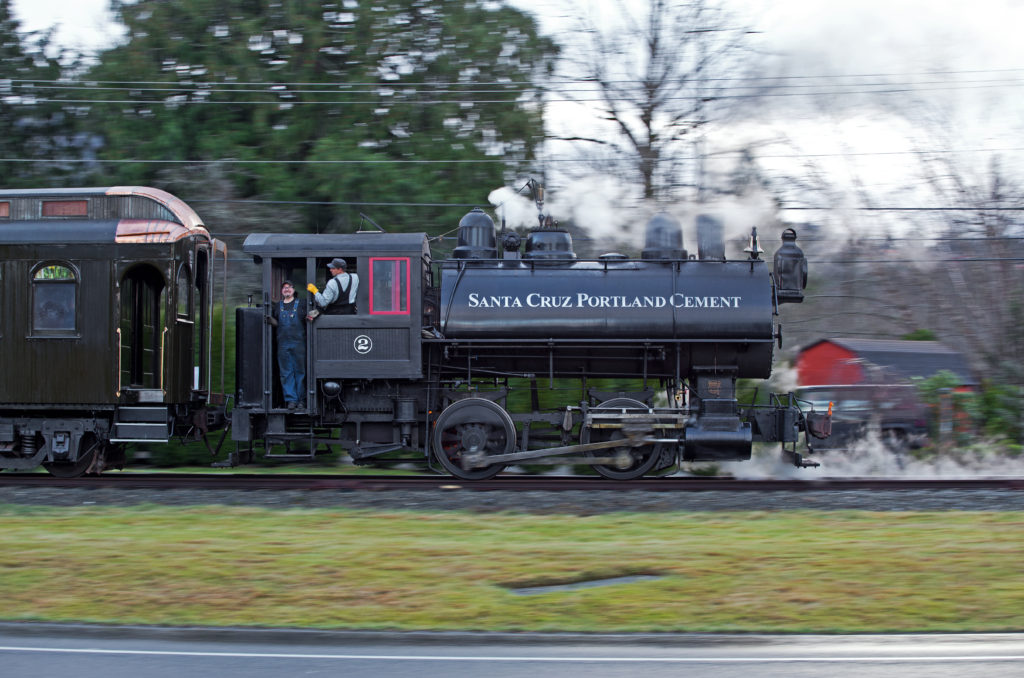
The Santa Cruz Portland Cement #2 also know as the “Chiggen”. The #2 was built by H. K. Porter in 1909, she is a 0-4-0T steam powered locomotive. #2 was purchased in 2006 by Efstathios I. Pappas and rebuilt from the ground up. For over 30 years before it was purchased it was a billboard for a fried chicken restaurant in Stockton California. You can learn more about the #2 at its website or on Facebook. http://www.scpc2.com/
We would like to thank Mr. Pappas for the opportunity to run this locomotive on our line. We would also like to thank Jerry Bernau of Bernau Development Corporation for help fund moving #2 to Folsom and the City of Folsom for allowing us to bring this piece of history to our city. Picture thanks to David Honan.
Heber Valley #4028
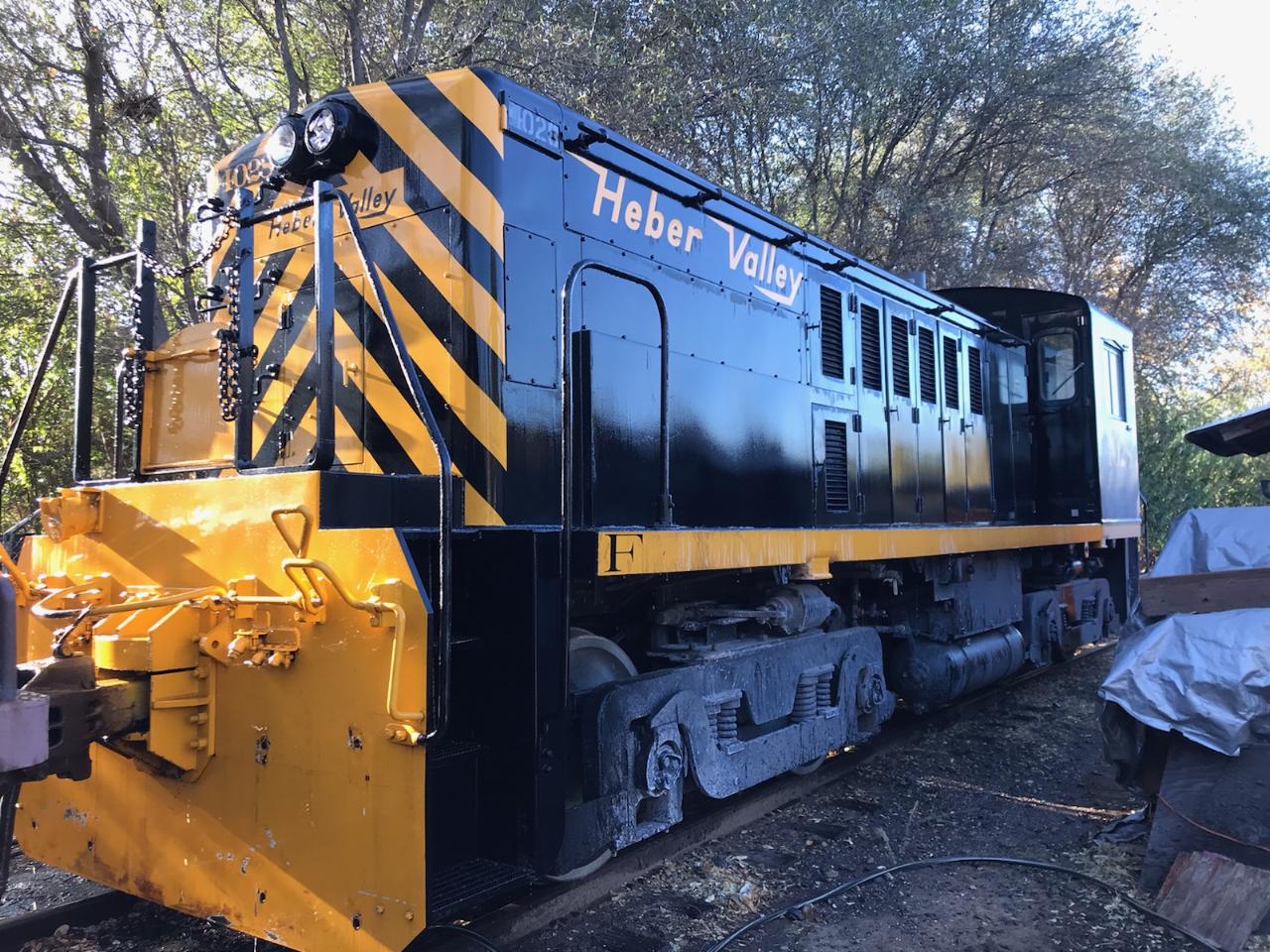
Heber Valley No. 4028 is a ex U. S. Army RS-4-TC built by BLH Davenport in 1954. 4028 was built after Whitcomb merged with Baldwin-Lima-Hamilton.
It was part of a group of 74 units built for the United States Army Transportation Corps (USATC). It was stored at the Tooele Army Depot Rail Shop at Hill Air Force Base Utah from 1980-1999. #4028 was rebuilt by the Tooele Army Depot in 1986, she received a new Caterpillar 3508 V-8 diesel engine, EMD switch gear and a modernized AAR brake stand and was used at Hill AFB till 2003. More information about RS-4-TC locomotives can be found at Utahrails.net.
March 2008 4028 was sold to Heber Valley Railroad and repainted to a Rio Grande inspired black and gold scheme in 2009. 4028 arrived in Folsom at our yards in Oct 2019 after living it whole life in Utah. 4028 will be our primary locomotive power.

Howard Terminal #8
Howard Terminal #8 is a 44-ton diesel-electric locomotive built by the Whitcomb Locomotive Company, then part of Baldwin Locomotive Works.
Built in October 1943 as U.S. Army #7504 (construction No. 60330), it saw service in Hawaii (likely at the Kapalama Basin, according to Hawaiian Railway Society) as a narrow-gauge switcher during and after WWII. It was one of two identical locomotives, the other being U.S. Army #7437 (construction No. 60301), which was built in July 1943, made available for sale as of December 1947, and presumed to have been scrapped soon after.
Later, it was converted to standard gauge, and it served on the Howard Terminal Railroad around the docks in Oakland, California until it was donated by the City of Oakland to the California State Rail Museum in Sacramento in Feb, 1987. In 2008, #8 CSRM donated it to FEDSHRA, where it underwent a four-year restoration, and it is now out of service with a bad traction motor and generator. We hope to restore her to be used as our second locomotive.
PSVRR Open Car #101
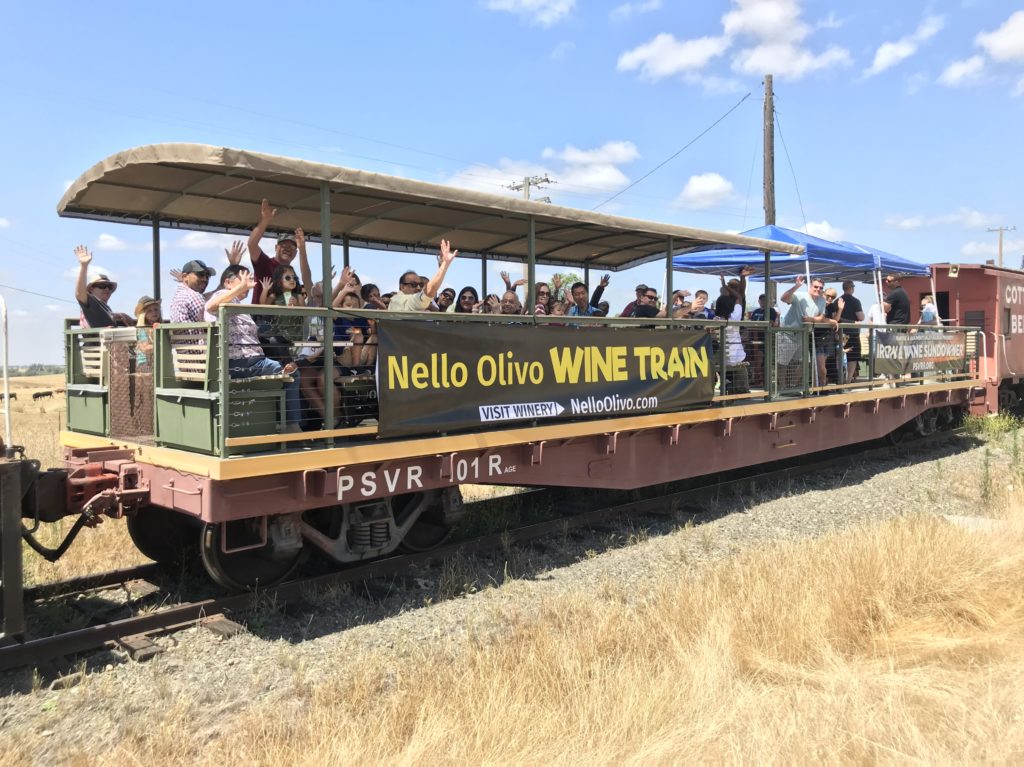
Originally built as a flat car to haul freight, the car was donated to us by California State Rail Museum in Sacramento, CA and it was restored and converted to a passenger car by FEDSHRA volunteers in 2010.
Cotton Belt Caboose #48
St. Louis Southwestern Railway (commonly known as the Cotton Belt) #48 is an all-steel bay window C-40-6 class caboose built in May 1965. It’s 43+ feet long and weighs 26 tons (52,000 pounds).
In 2008, Fernley Preservation Society of Fernley, NV began restoring the interior, and over a seven-month period, the floors and walls were rebuilt, the windows and doors were repaired, and new paint was applied. A restored oil stove and original caboose seats were also installed.
The caboose was donated to us by Fernley Preservation Society, and FEDSHRA volunteers returned it to service in 2013.
